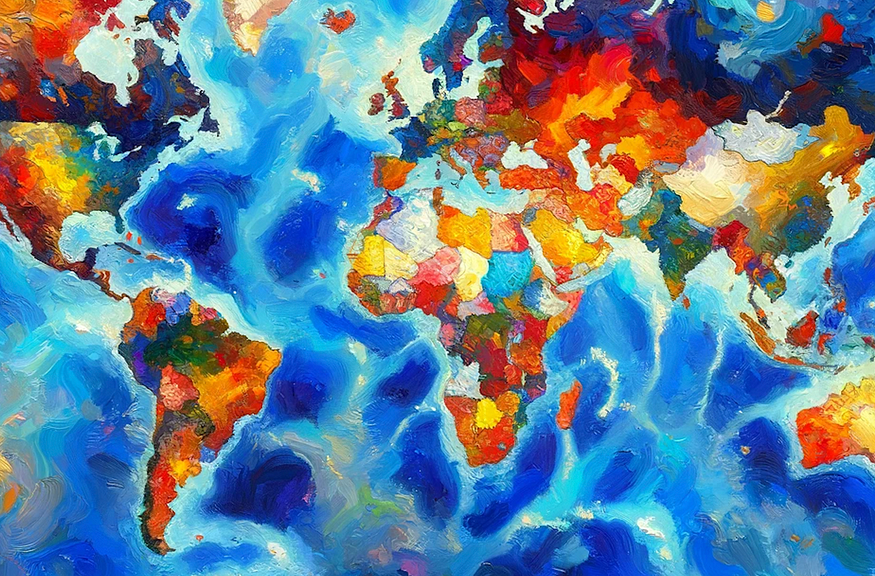
Insanely Fast No-Code Python Folium Maps With Nifty GPT-4 Prompting
Last Updated on December 11, 2023 by Editorial Team
Author(s): John Loewen, PhD
Originally published on Towards AI.
“Global Happiness” averages and trends in less than 15 minutes
Dall-E 2 image: impressionist oil painting of global happiness trends
With careful GPT-4 prompting, complex data visualization problems (including map creation) can be solved in minutes instead of hours.
Need proof? Let’s go at it with a full-on use case.
As an example, we can piggyback GPT-4 to create Python code to access “Happiness” data (from the UN Happiness dataset) and create maps.
I am curious about 2 questions:
Question 1. What is the average happiness score for each country over this time period (for the years of 2015–2022)?
Question 2. Which countries are trending “happier” and which countries are trending “unhappier” over this time period (for the years of 2015–2022)?
To answer these 2 questions, we can find, extract, and manipulate the relevant dataset, AND create 2 beautiful folium maps, in a jiffy.
Here’s how.
Prompt to GPT-4: Can you provide me with the link to the CSV data for the most recent UN Happiness Report for the years 2015–2022
Response from GPT-4:
This data set has already been cleaned, and for the years we are looking for (link HERE) — once downloaded, we can step right into the data.
To keep it relatively simple (and modular), I want to first make sure the data is accessible and accurate.
To see if… Read the full blog for free on Medium.
Join thousands of data leaders on the AI newsletter. Join over 80,000 subscribers and keep up to date with the latest developments in AI. From research to projects and ideas. If you are building an AI startup, an AI-related product, or a service, we invite you to consider becoming a sponsor.
Published via Towards AI
Take our 90+ lesson From Beginner to Advanced LLM Developer Certification: From choosing a project to deploying a working product this is the most comprehensive and practical LLM course out there!
Towards AI has published Building LLMs for Production—our 470+ page guide to mastering LLMs with practical projects and expert insights!

Discover Your Dream AI Career at Towards AI Jobs
Towards AI has built a jobs board tailored specifically to Machine Learning and Data Science Jobs and Skills. Our software searches for live AI jobs each hour, labels and categorises them and makes them easily searchable. Explore over 40,000 live jobs today with Towards AI Jobs!
Note: Content contains the views of the contributing authors and not Towards AI.














